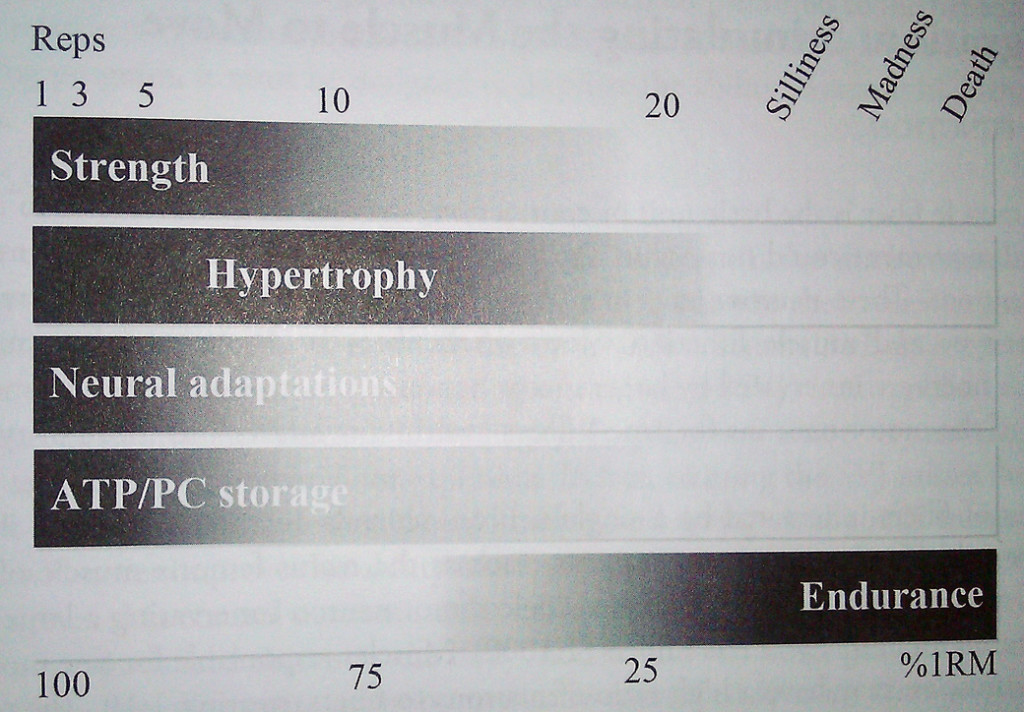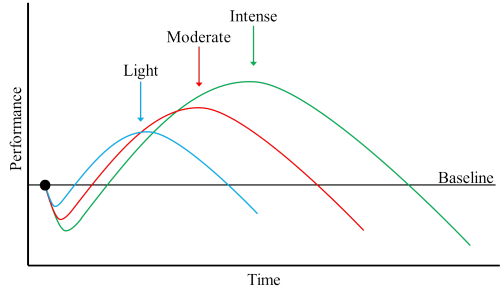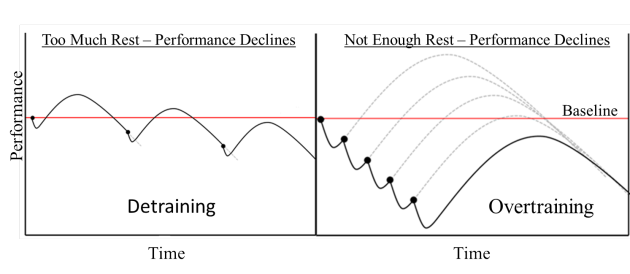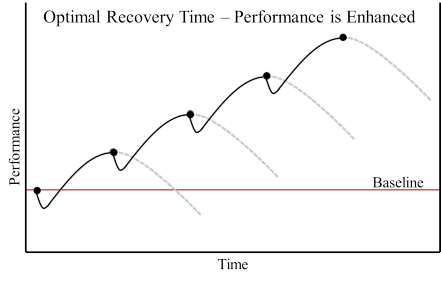In the first article of this programming series, we discussed the scientific principles that make up the foundation of any proper powerlifting program. We talked about:
- Specificity – you need to do heavy squats, benches, and deadlifts
- Overload – you need to do more than you’ve done before to make progress
- Fatigue Management – you have to properly time your workouts and your recovery periods
- Individual Differences – your training needs to be individualized
Without any of these core foundational principles in place, your powerlifting training, by definition, is going to be sub-optimal. For a more in-depth examination of the physiology behind these principles, I’d recommend picking up a copy of ProgrammingToWin. I consider it one of the best introductory books on proper programming currently on the market.
If you’d rather watch than read:
Powerlifting Training Variables
Now, in this installment of the Powerlifting Programs series, we’re going to discuss the training variables that we must manipulate correctly in order to satisfy these principles. Namely, we’re going to discuss proper application of volume, intensity, and frequency.
Intensity
In terms of powerlifting programming, intensity, in my opinion, is the foremost consideration. For the unfamiliar, intensity doesn’t refer to your psychological state of arousal and it doesn’t refer to your level of effort in the gym. When we’re talking about programming, intensity generally refers to how heavy the weights are relative to your one rep max. In other words, if you’re capable of lifting 100lbs, and you’re about to do a set of 80lbs for reps, the relative intensity of this set would be 80%.
Intensity is the primary determinant of your training effect.

Remember, this is a continuum; you can still build some muscle with low reps and you can still build some strength with high reps. The point is that intensity biases the training effects in particular directions.Photo: Practical Programming 3rd Edition, Mark Rippetoe, Aasgaard Co. 2014.
Intensity and Specificity
By working in the 90%+ range, typically using hard sets of 1, 2, and 3 repetitions, the training effect is going to be primarily neural in nature. Simply put, your nervous system is going to improve its overall efficiency through higher total levels of muscular recruitment. Additionally, the coordination of this recruitment will improve resulting in further performance gains.
A very large component of performance when it comes to a one rep max is going to be neural in nature. In order for a program to meet the specificity threshold for powerlifting training, you need to spend frequent, or at least semi-frequent, training time in the 90%+ range at the appropriate times in your training cycle.
As we move down the repetition continuum from Practical Programming shown above, the training effect slowly shifts away from a neural efficiency bias to a muscular hypertrophy bias and then on down to a muscular endurance bias. This is primarily due to the fact that low rep sets are limited mostly by force production whereas higher rep sets begin to be influenced more by metabolic fatigue factors such as ATP depletion, lactic acid threshold, and other endurance components that aren’t necessarily relevant to powerlifting.
Intensity and Hypertrophy
Now, powerlifters have a need to work in relatively lower intensity ranges as well; though, probably no lower than 75% with only a few exceptions. Muscular hypertrophy is a necessary component of continued, consistent progress in powerlifting. There is only so much juice you can squeeze out of your technique and general neural efficiency. Eventually, you have to build a bigger motor if you want to go faster and further. A good powerlifting program will have a lifter spending time in the 75-85% intensity range doing sets of 4-8 reps or so in order to help build a bigger muscular base.
Make no mistake about it, you get what you train for. If your training consists of nothing but sets of 5, you’re going to get a nice blend of strength and size. However, 5s are optimal neither for strength nor size. So, while spending some time in that range is beneficial for a myriad of reasons, spending time exclusively in such a rep range would make a program non-specific to powerlifting. You have to go heavy, guys.
Remember, intensity determines training effect. For powerlifting, we want that training effect to be an increase in maximal force production and that entails lifting very heavy weights.
Volume
To borrow from Mike Tuchscherer, if intensity determines training effect then volume determines the magnitude of that effect.
For example, if you expose your skin to the sunlight, you’re probably going to get a tan (“a training effect”). If you stay in the sun for one minute, you might not have done enough to constitute adequate “stress”. The body may not be forced to compensate because you haven’t overloaded it. If you stay in the sun for two hours, you’ll get plenty of “stress”, but it will probably be too much and you’ll likely burn. In this case, you haven’t managed fatigue properly.
More importantly, there is a wide range of possibilities in the middle. If you spend 15 minutes in the sun, you’re going to get one level of tan; if you spend 30 minutes in the sun, you’re going to get a different level of tan. In this case, time spent in the sun is our “volume” of stress and the level of tanning is the “magnitude” of the training effect.
In training, we can define volume in a variety of ways: the number of total reps in a workout, the number of sets, or we can calculate “tonnage”. Tonnage is nothing more than multiplying the total amount of reps and sets you’ve completed by the weight that you’ve used. For example, if you squat 405x5x5, you’ve accumulated (405*5*5=)10,125lbs of total tonnage.
In overly simplified terms, the more tonnage you accumulate, the bigger your training effect will be. That said, the more tonnage you accumulate the longer you will have to wait before you’re recovered enough to train again. As with anything, there is an optimal dose-response relationship.

Volume vs. Recovery: the bigger the dose of volume you provide, the larger the effect, but the larger the recovery period as well. None of options these are “right” nor “wrong”; there is an optimal dose-response relationship where gains are maximized.Photo:maxpotentialsports.com
Intro to Frequency
Training organization is beyond the scope of this article, but I would be remiss to discuss training variables without touching upon the topic of frequency. Frequency is simply how often you train per week. Usually, frequency is discussed in terms of each lift. So, if you squat three times a week, bench four times a week, and deadlift twice, your training frequency for each lift is the respective amount of times you perform that lift each week.
As I’ve alluded to above, frequency, in terms of fatigue management, is both a game of timing and of dose-response relationships. When you take too much time between training sessions, you begin to detrain. Likewise, if you do not take enough time to recover, you’ll begin to overtrain.

If you wait too long between sessions, you’ll begin to detrain. If you don’t wait long enough, you risk overtraining.Photo:maxpotentialsports.com
The goal is to time training in such a way that you’re always introducing the next stressor at the peak of your adaptation to the previous one. If you can do so, you’ve optimized your frequency.
Volume vs. Frequency
The confounding factor here is the dose-response relationship of volume on training effect. As I previously stated, the more volume you do, the larger the training effect will be at a given intensity. And yet, the more volume you do, the longer you will take to recover. So in actuality optimal frequency follows optimal volume. If you’re doing more volume per session, you’ll need less frequency and visa versa.
I can hear you asking already, “Well, how does one optimize the volume dose”? Let me just state that this is an incredibly complex question to answer. That said, I’ll do my best to answer simply.
Consider the sun tan analogy one more time. The more unadapted you are, the more pale your skin is, the less time you need in the sun in order to produce an adaptation. Tanning longer than this minimum required time for adaptation increases the chances of burning and, at a point, you’ll begin to experience diminishing marginal returns on the additional exposure time.
In other words, the relationship between volume and training effect is not linear. Past a certain point, the benefits you accrue from additional volume decrease in relationship to that volume. For example, hypothetically, let’s say that you know doing 405x5x5 will increase your 1RM by 5lbs. 405x5x10 will not increase your 1RM by 10lbs even though the volume is twice as high. Maybe you’ll get 7.5lbs.
The High Volume Trap
Wait a minute. If you get a bigger training effect, why not just do more volume anyway? One answer is that there are practical limitations to how long and how often we can train as athletes. If your body becomes adapted to 405x5x10, guess what you have to do to produce further adaptations? Even more volume! At some point, you’re going to run out of resources in terms of time, energy, and willingness. Most of us are not professional athletes with the ability to spend 6-8 hours training every single day.
The second answer is that you’re actually short-circuiting your long term potential by hopping on a high volume program too early. Why? Well, if you work up to 5×10 slowly, you will have gone through more stress-recovery-adaptation cycles to get to that level of volume tolerance than the guy who jumped to 5×10 right off the bat.
To make it plain, you’re going to be stronger than your competitors at the same level of volume because you’ll be more adapted than they are. Your competitor who did 405x5x10 may initially pass you with his 7.5lbs jump to your 5lbs jump, but by the time you work up to 5×10, you’ll have experienced many 5lbs jumps rather than just one 7.5lbs jump. You’ll improve the entire time without pushing your volume tolerance needlessly high.
Optimal Frequency
To bring this back to a head, your frequency is determined by the total volume you do and your recovery time from that volume. If you’re at the point in your training where you can do enough volume in one session to produce an adaptation, your frequency might be something like twice a week – recovery permitting.
However, eventually, you’ll reach a point where doing the amount of volume that you need to do is too time consuming for a single training session. Once you’ve hit this point, it becomes necessary to split the workload across several days. In this manner, training frequency increases over time in step with the increase in training volume that occurs over the course of any athlete’s training career. Practicalities are our guide here. If you’re in the gym for four hours for a single training session, it might be time to increase frequency.
The key takeaway from this discussion on frequency is the fact that you want to time your workouts relative to your recovery periods; you want to time your next dose of stress exactly as your performance is peaking from the last dose.
Moving Forward
In the next article, we’re going to discuss training organization. Primarily, the focus will be periodization. We’ll look at when certain kinds of periodization are appropriate and when they aren’t. I know I said this last time, but after this piece is released, we’ll have the necessary tools in place to begin analyzing specific programs.
Did You Enjoy The Powerlifting Programming Series? If so, you’ll absolutely love our eBook ProgrammingToWin! The book contains over 100 pages of content, discusses each scientific principle of programming in-depth, and provides six different full programs for novice and intermediate lifters. Get your copy now!
Like this Article? Subscribe to our Newsletter!
If you liked this articled, and you want instant updates whenever we put out new content, including exclusive subscriber articles and videos, sign up to our Newsletter!
Questions? Comments?
For all business and personal coaching services related inqueries, please contact me:
[contact-form-7 id=”3245″ title=”Contact form 1″]
Table of Contents
Powerlifting Programs I: Scientific Principles of Powerlifting Programming
Powerlifting Programs II: Critical Training Variables
Powerlifting Programs III: Training Organization
Powerlifting Programs IV: Starting Strength
Powerlifting Programs V: StrongLifts 5×5
Powerlifting Programs VI: Jason Blaha’s 5×5 Novice Routine
Powerlifting Programs VII: Jonnie Candito’s Linear Program
Powerlifting Programs VIII: Sheiko’s Novice Routine
Powerlifting Programs IX: GreySkull Linear Progression
Powerlifting Programs X: The PowerliftingToWin Novice Program
Powerlifting Programs XI: Madcow’s 5×5
Powerlifting Programs XII: The Texas Method
Powerlifting Programs XIII: 5/3/1 and Beyond 5/3/1
Powerlifting Programs XIV: The Cube Method
Powerlifting Programs XV: The Juggernaut Method
Powerlifting Programs XVI: Westside Barbell Method
Powerlifting Programs XVII: Sheiko Routines
Powerlifting Programs XVIII: Smolov and Smolov Junior
Powerlifting Programs XIX: Paul Carter’s Base Building
Powerlifting Programs XX: The Lilliebridge Method
Powerlifting Programs XXI: Jonnie Candito’s 6 Week Strength Program
Powerlifting Programs XXII: The Bulgarian Method for Powerlifting
Powerlifting Programs XXIII: Brian Carroll’s 10/20/Life
Powerlifting Programs XXIV: Destroy the Opposition by Jamie Lewis
Powerlifting Programs XXV: The Coan/Philippi Deadlift Routine
Powerlifting Programs XXVI: Korte’s 3×3
Powerlifting Programs XXVII: RTS Generalized Intermediate Program

Hi Izzy; with regards to the ‘high volume trap’ section, do you think this fits into part of your criticism of the SS novice program, and conversely adapted programs like greyskull and maybe even the 5×5 +assistance programs you see? Also, how would you rate your own novice program (from your training group days) under these criteria, and would you change much if you were to do it again?
Hey Jon, sorry I don’t understand the first part of your question. What criticisms are you referring to specifically? I don’t consider SS a high volume program, but, in my experience, the squat volume is excessive. I’d likely increase the volume of everything else even for beginners. I would also decrease average intensity though.
The program I ran wasn’t a novice program at all. It was an intermediate, cyclical 5/3/1 template with autoregulated weight selections. So, it would rate poorly in specificity, fine in overload, poorly in fatigue management due to low frequency, and very well in individual differences. I used that template mostly out of convenience. Managing a group of 12+ lifters while you’re also lifting is very hard unless everyone is doing exactly the same thing. That is primarily why I did what I did.
I’d change virtually everything if I was going to do it again.
Sorry, allow me to clarify:
From your SS review -” Anecdotally, most people need MORE upperbody volume than lower body volume. This could be one explanation for what I perceive to be the poor bench press results this program tends to produce.”
And from this article – “you’re actually short-circuiting your long term potential by hopping on a high volume program too early… You’ll improve the entire time without pushing your volume tolerance needlessly high.”
I guess what i’m trying to say is how do you balance out wanting more upper body volume while saying that you shouldn’t jump up the volume too much too early?
Basically because there is still a minimum threshold of volume to cause an adaptation. Consider it another way. Why start with 3×5? How about 1×5? How about 1×3? How about 1×1? Even novices have a baseline level of work they they must do to disrupt homeostasis and bring about the various stages of Seyle’s GAS.
In fact, one intelligent approach might be to start with a 5×5 “ramped” program which features only one heavy top set and then graduate to 3×5 once that stops producing results. From there, as in Starting Strength to Texas Method, you could further bump it to 5×5 as that ceased to be enough to pass the threshold.
Keep in mind that one of my main points with that selection is not necessarily that SS NEEDS more upperbody volume. It is that it doesn’t make particular sense for there to be sooo much more lower body volume than upperbody volume.
EDIT: If there was less urgency for the strength gains (say a non-competitive lifter, although i accept that isn’t what this site is about), would you prefer a slower upper body progression to allow for simpler, less ‘intense’ intermediate programming?
To me, optimal is optimal. Regardless of what your training goals are, you should be maximizing your time investment. It is probably more important for a non-competitive lifter to be even more judicious about their progression than it is for a competitive lifter. A competitive lifter will always find a way to improve because it is a priority to them. Not necessarily so for the recreational lifter. They have more pressure to get it right the first time; they generally can’t afford to just train more in order to cover up other underlying issues.